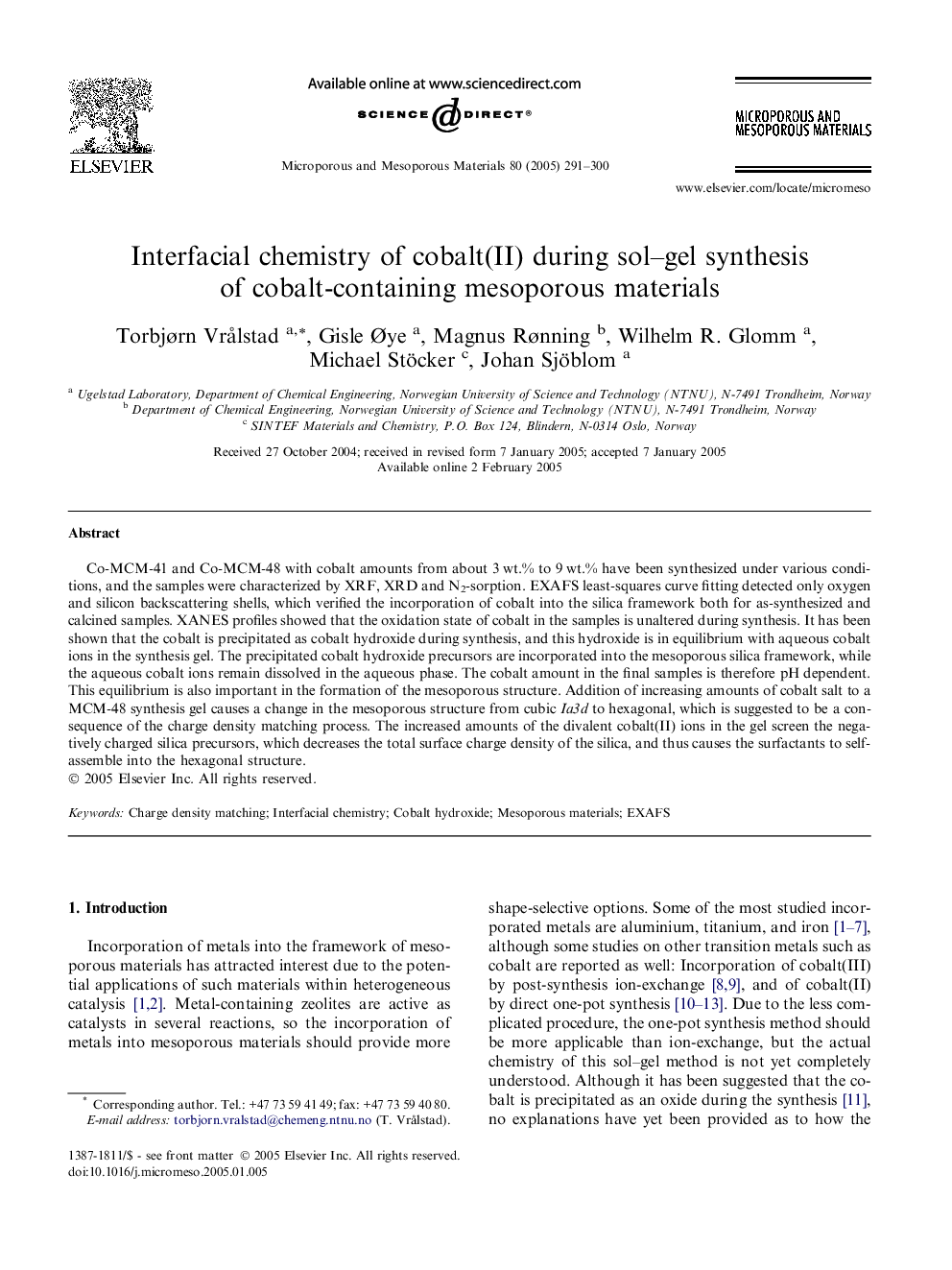| Article ID | Journal | Published Year | Pages | File Type |
|---|---|---|---|---|
| 9617768 | Microporous and Mesoporous Materials | 2005 | 10 Pages |
Abstract
Co-MCM-41 and Co-MCM-48 with cobalt amounts from about 3Â wt.% to 9Â wt.% have been synthesized under various conditions, and the samples were characterized by XRF, XRD and N2-sorption. EXAFS least-squares curve fitting detected only oxygen and silicon backscattering shells, which verified the incorporation of cobalt into the silica framework both for as-synthesized and calcined samples. XANES profiles showed that the oxidation state of cobalt in the samples is unaltered during synthesis. It has been shown that the cobalt is precipitated as cobalt hydroxide during synthesis, and this hydroxide is in equilibrium with aqueous cobalt ions in the synthesis gel. The precipitated cobalt hydroxide precursors are incorporated into the mesoporous silica framework, while the aqueous cobalt ions remain dissolved in the aqueous phase. The cobalt amount in the final samples is therefore pH dependent. This equilibrium is also important in the formation of the mesoporous structure. Addition of increasing amounts of cobalt salt to a MCM-48 synthesis gel causes a change in the mesoporous structure from cubic Ia3d to hexagonal, which is suggested to be a consequence of the charge density matching process. The increased amounts of the divalent cobalt(II) ions in the gel screen the negatively charged silica precursors, which decreases the total surface charge density of the silica, and thus causes the surfactants to self-assemble into the hexagonal structure.
Related Topics
Physical Sciences and Engineering
Chemical Engineering
Catalysis
Authors
Torbjørn VrÃ¥lstad, Gisle Ãye, Magnus Rønning, Wilhelm R. Glomm, Michael Stöcker, Johan Sjöblom,
